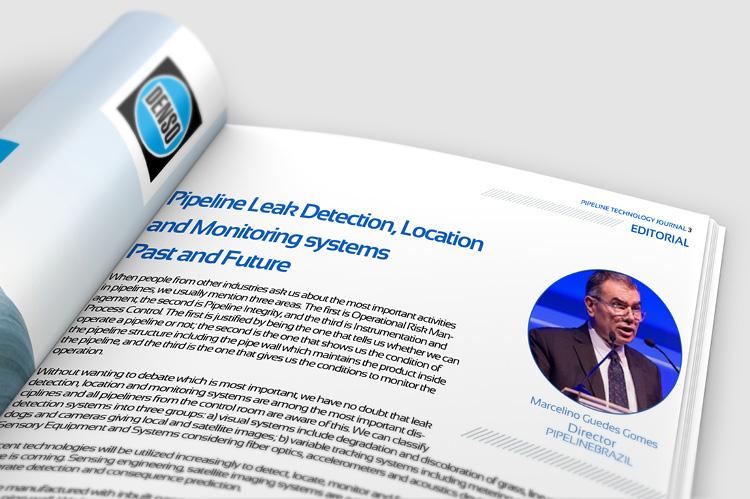Editorial: Pipeline Leak Detection, Location and Monitoring systems Past and Future

When people from other industries ask us about the most important activities in pipelines, we usually mention three areas. The first is Operational Risk Management, the second is Pipeline Integrity, and the third is Instrumentation and Process Control. The first is justified by being the one that tells us whether we can operate a pipeline or not; the second is the one that shows us the condition of the pipeline structure including the pipe wall which maintains the product inside the pipeline, and the third is the one that gives us the conditions to monitor the operation.
Without wanting to debate which is most important, we have no doubt that leak detection, location and monitoring systems are among the most important disciplines and all pipeliners from the control room are aware of this. We can classify detection systems into three groups: a) visual systems include degradation and discoloration of grass, line walkers, sniffer dogs and cameras giving local and satellite images; b) variable tracking systems including metering and SCADA tools and c) Sensory Equipment and Systems considering fiber optics, accelerometers and acoustics devices.
Recent technologies will be utilized increasingly to detect, locate, monitor and forecast the effects of any leaks or accidents. The future is coming. Sensing engineering, satellite imaging systems are a reality in theory and will shortly be put into practice to accelerate detection and consequence prediction.
Line Pipe manufactured with inbuilt nano-sensors such as: Temperature, Strain, Pressure, Density, Flowrate, will be affixed inside the pipe wall. We have to considerer new materials – Silicon, Polymers and Nanostructured materials in combination with layers of steel.
Visualization, multi and hyperspectral data from satellites or autonomous drones and aerial imagery are just starting to provide the control room with essential information from the ROWs.
Data Science, Artificial Intelligence, Machine Learning, Big Data and other new methodologies will recommend actions to be taken following an incident. Smart Technology and IoTs, Intelligent Fiber Cables, mesh of different kinds of sensor installed along the ROW will link the pipelines to the authorities, services and the general public.
YPPs – Young Pipeline Professionals will be responsible for designing and implementing the pipelines of the future, considering the new technologies and boundary conditions: No Leaks, No Accidents, No Loss of Life, Fewer Operators, Automatic Pilot, Data Engineering, Sensor Engineering etc. The pipeline industry has been a conservative industry but will change very fast with digital engineering and the new generation.
Leaks and Accidents will only be seen in museums and in chapters on pipeline history.
I am happy that this issue of the Pipeline Technology Journal will shed a light on latest developments in pipeline leak detection and monitoring.
Yours,
Marcelino Guedes Gomes, Director. PIPELINEBRAZIL
